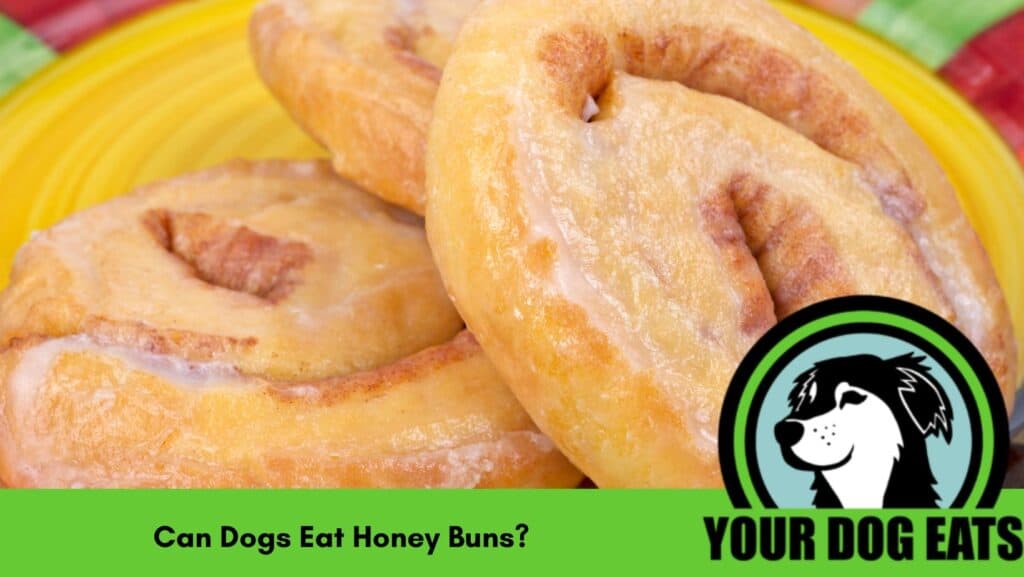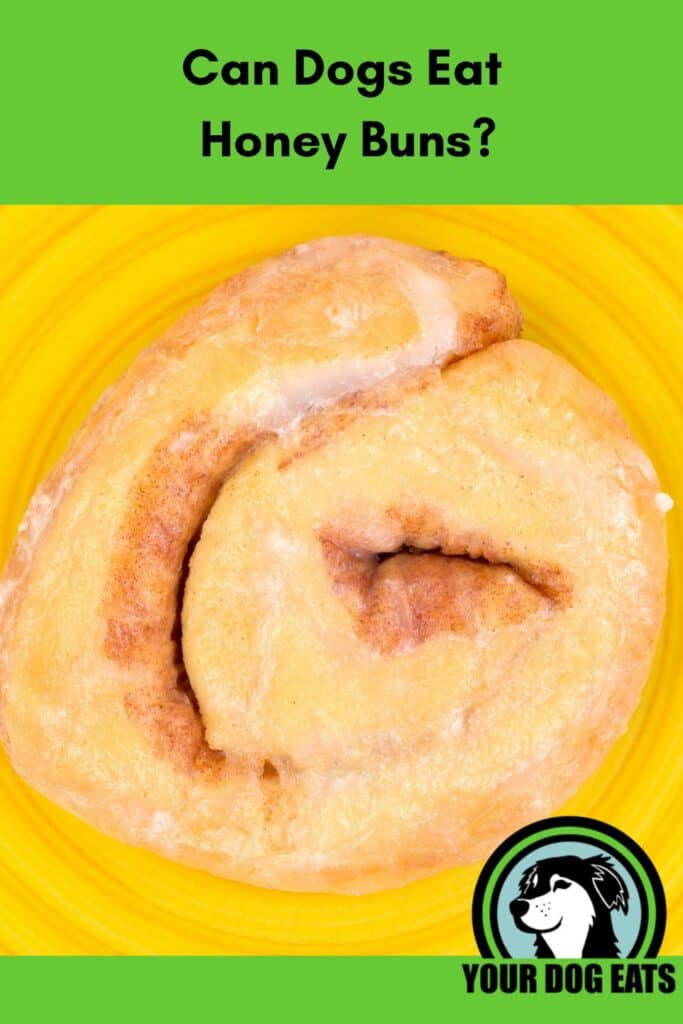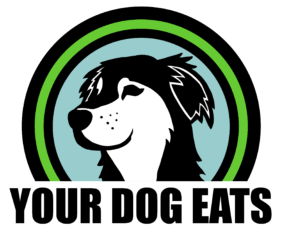You pop into your local convenience store for an afternoon pick me up: a honey bun! And along for the ride is your precious furry friend. So you wonder: can dogs eat honey buns?

Offering a honey bun as a special treat for your dog may seem like a way to spoil your best friend, but is it really safe? In this blog post, we will take a look at the truth about honey buns and dogs. Will they make your pup sick? Or are they okay to eat in moderation?
Unfortunately, we just don’t recommend making this treat a regular habit. And more than a bite or two is a no-no.
Keep reading to find out the full explanation of why this treat is better for humans than for dogs.
This post was reviewed for veterinary accuracy by Cara Wright, DVM. For more information about our review process, please visit the About Us page. This article is for informational purposes only and should not be a substitute for professional veterinary help.
What are honey buns?
Honey buns are a type of sweet roll that is often served as a breakfast pastry or dessert. They can be made with various types of dough, but are typically soft and fluffy. Honey buns are also usually topped with a sweet glaze or icing.
Many of us are most familiar with the Honey Buns that are made by the Little Debbie brand. These popular snack cakes are easy to find at grocery stores, gas stations, or in vending machines (1).
What’s in Honey Buns?
The ingredients in Little Debbie Honey Buns include (2):
- Bleached flour
- Water
- Sugar
- Soybean oil
- Eggs
- Honey
- Baking soda
- Salt
- Preservatives
- Cocoa powder
- Corn starch
- Palm kernel oil
- Nonfat milk
- Artificial flavors and colorings
- Yeast
One honey bun has nearly 500 calories, including 23 grams of fat and 30 grams of added sugars.
Honey buns that are homemade or from a different manufacturer will have different ingredients and different nutrition facts. But no matter what, these are a sweet treat, whether they’re for you or your pup.
Are honey buns bad for my dog?
Honey Buns do not offer you – or your doggo – much in the way of nutrition. They’re tasty, but eating them often can crowd out the more nutritious food that your dog should be eating on a regular basis.
Short term concerns
Because they’re so high in fat and sugar, it is possible that if your dog has too much of a honey bun, it would cause diarrhea.
Of greater concern, intake of high-fat meals or treats can increase the risk of your dog developing pancreatitis (3). Signs of pancreatitis include:
- Nausea and vomiting
- Fever
- Feeling lethargic
- Abdominal pain
- Diarrhea
- Decreased appetite
If your dog exhibits any of the above signs, contact your veterinarian immediately. Pancreatitis is a medical emergency; a dog’s health can spiral quickly once they get sick. If you suspect that your dog might have pancreatitis, get in touch with your vet right away.
Long-term risk
If your dog has honey buns on a regular basis, it is possible that they’re at a greater risk of obesity and other health concerns, including cavities and chronic pancreatitis (4).
Raw dough is a no-no
If you’re making honey buns from scratch, do NOT give any raw dough to your dog.
The yeast in raw dough is still active and can cause your dog to bloat; this can be very dangerous. The ASPCA does not ever recommend giving raw dough to your dog (5).
So, can I give my dog a honey bun?
It’s not the end of the world if your dog has a honey bun, but it’s certainly not the best treat you could give them. If you want to give your dog a sweet treat, there are plenty of healthier options out there for you to choose from. Your dog will still love you just as much!
A Final Word from Your Dog Eats
Dogs and humans alike enjoy a treat now and again. And if you want to share a bite or two of a honey bun with your doggo, you are not likely to cause any harm.
We just don’t recommend making this treat a regular habit. And more than a bite or two is a no-no.
With so many added sugars and the treat being so high in fat, a honey bun may make your dog have an upset tummy or diarrhea in the short term…and it can increase your dog’s risk of obesity and cavities long term.

